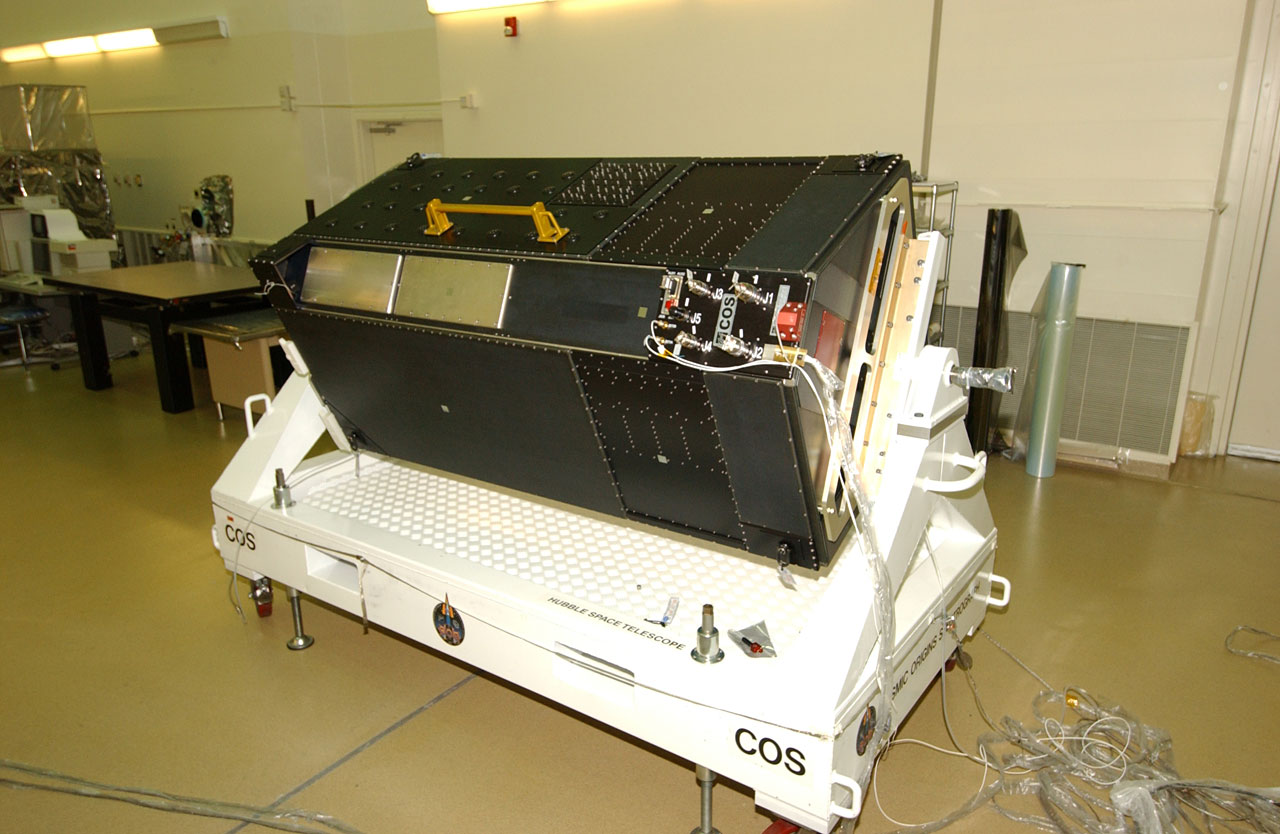Hubble's Instruments: COS — Cosmic Origins Spectrograph
COS studies the large-scale structure of the Universe and the formation and evolution of galaxies, stars and planets. It helps determining the formation of elements considered essential for life, such as carbon and iron. As a spectrograph, COS does not capture the kinds of images that have made Hubble famous. Rather performs spectroscopy, the science of breaking up light into its individual components. Any object that absorbs or emits light can be studied with a spectrograph to determine its temperature, density, chemical composition and velocity. COS has two channels, the Far Ultraviolet (FUV) channel covering wavelengths from 115 to 177 nanometres and the Near Ultraviolet (NUV) channel covering wavelengths from 175 to 300 nanometres. The light-sensing detectors of both channels use micro-channel plates to amplify the incoming signal prior to detection. A key feature of COS is it maximised efficiency or throughput. Every bounce of a light beam along its path leads to a loss in signal strength. COS has a single bounce when the beam is fed into the appropriate channel. The table below reveals some of the key parameters for the instrument. FUV Channel NUV Channel The aims of the instrument are organized into three broad categories, united by the theme of cosmic origins: COS was built at the Center for Astrophysics and Space Astronomy at the University of Colorado; the team is led by James Green. The prime contractor for the design and manufacture of COS was Ball Aerospace & Technologies Corporation in Boulder, CO. Development of the FUV detector was at the University of California-Berkeley.Overview
Technology
Spectral range (nm)
Spectral Resolution
Detector Type
Detector array size (pixels)
Gratings
Discovery factor over previous HST instruments
Science Goals
Development
Links
 |
|
Cosmic Origins Spectrograph (COS), in the Clean Room at Goddard Space Flight Center
|